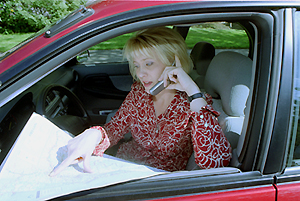
|
CONNECTIONS
|
IDAHO
ITD
HOME
IDAHO DMV
ITD NEWS
HIGHWAY
SAFETY
IDAHO STATE
POLICE
TRAVEL SERVICES
STATE OF IDAHO
NATIONAL
AASHTO
AAMVA
AAA of IDAHO
FEDERAL HIGHWAYS
FEDERAL AVIATION
IDAHO STATE POLICE
NHTSA
NTSB
TRB
U.S. DOT
Idaho
Transportation
Department
Public Affairs Office
P.O. Box 7129
Boise, ID 83707
208.334.8005
Fax: 208.334.8563
Email

511
Traveler information on the phone
Three digits – 511 – will soon join 411 and 911 as important phone numbers everyone needs to know. Idaho’s 511 traveler information service will launch in November, providing road and weather information by phone and Internet.
 Travelers
can connect to the service by simply dialing 511 or logging on to 511.idaho.gov
for continual updates about winter driving conditions, weather, emergency
road closures, traffic delays, links to tourism information and more.511
on the phone.
Travelers
can connect to the service by simply dialing 511 or logging on to 511.idaho.gov
for continual updates about winter driving conditions, weather, emergency
road closures, traffic delays, links to tourism information and more.511
on the phone.
The 511 phone system uses voice recognition technology, enabling callers to interact with the system simply by speaking into the telephone. The system also incorporates options for using the phone keypad to make selections.
Callers to 511 would hear the following greeting:
“Welcome to 511 travel information, brought to you by the Idaho Transportation Department. You can also access traveler information on the Internet at 511.idaho.gov . Say the name of a city in the region you want, or hold on for the main menu.”
If the caller says “Lewiston” he or she would hear a report that sounds something like this:
“There is one urgent traffic report within 80 miles of Lewiston affecting U.S. 95 and U.S. 12. Say the name of a route to hear the detailed reports. For example, say ‘U.S. 12'.”
Or, if the caller says nothing, the system defaults to the main menu:
“Here are all the categories you can choose from. When you hear the one you want, just say it.
-
Highway reports
-
Weather
-
Regional Summary
-
Idaho Tourism
-
Other States
-
Help with 511
That’s all the categories. Just say the one you want.”The system is designed so that callers can pick the kind of travel information they want to hear.
“Other states using the same type of system report
that 511 callers are quick to learn and understand the system to suit
their needs,” says Jeff Stratten, ITD Public Information Officer.
“Callers familiarize themselves with the menu options and easily
navigate the phone system based on the routes or areas where they travel
most.”Calling 511 from a cell phone
Most wireless companies will connect to 511; however, there may be places
where reception is poor, preventing access or hindering connection to
511.
Motorists are asked to always put safety first. Having a passenger call 511, calling or logging on to the Web site prior to departure, or calling from an appropriate stopping point along the way are alternatives to calling while driving.
Using voice commands with 511
State-of-the-art speech recognition technology allows callers to verbally
tell the system what they want, such as "highways" or "weather"
information. The requested information is then "spoken" back
to the user. Callers can use key words to quickly navigate the system
to the specific road segment for the information sought.
Voice recognition technology can be sensitive to background noise, such as a radio or others speaking near the phone, which may cause the system to misunderstand voice commands. Speaking clearly and avoiding background noise can help avoid these problems.
Callers can also use the keypad to make requests in the 511 system.
Trouble accessing 511 by phone
If using a cell phone, callers may have poor reception (calling from
a “no reception pocket”). In this event, calling from another
location may result in a better connection.
In some cases along state borders, 511 may or may not work depending
upon the cell tower location for that specific call. Should this occur,
callers can dial 888-IDA-ROAD (432-7623) to access the 511 system. The
888 number can also be used when calling from neighboring states.
Calling costs
There is no cost to call 511, which is a public service of the Idaho
Transportation Department. Calls to 511 are considered local when dialed
from landline phones and there is no additional charge for the call.
Wireless phone users are responsible for normal airtime and roaming charges in accordance with their wireless service contracts. ITD encourages motorists to pull off the road and park in a safe area before using cell phones.
Pay phone users are responsible for the local call fee.
The voice behind the reports
Ray Herne of the New Mexico Department of Transportation provides the
voice of Idaho 511, as well as 11 other states. A former radio announcer,
Herne records the names of towns, highways, travel and weather terms
- all of which are converted to computerized "wav" files that
are stitched together to mimic normal speech patterns. More than 20,000
digitized files make up the database of recordings that callers hear
when they access the 511 phone system.